Tokenization on Optimism
What is Tokenization
Tokenization is a process of creating digital representations of various assets on a blockchain. These assets can be physical, such as real estate or art, financial, such as stocks or bonds, or intangible, such as intellectual property or data. The assets are represented in the form of digital tokens that can be traded, verified, and secured on a decentralized network. Tokens can be fungible or non-fungible, depending on their design and function. Tokenization is part of Web3, which aims to make online space more open, transparent, and democratic.
Optimism as tokenization platform
What is Optimism
Optimism is a Layer 2 Optimistic Rollup network that aims to reduce the cost and latency of Ethereum while utilizing its strong security guarantees. It is a fast, stable, and scalable L2 blockchain built by Ethereum developers, for Ethereum developers. Built as a minimal extension to existing Ethereum software, OP Mainnet’s EVM-equivalent architecture scales your Ethereum apps without surprises. If it works on Ethereum, it works on OP Mainnet at a fraction of the cost.
Benefits of Optimism
- Reduced transaction fees: Optimism uses optimistic rollup technology, which enables large volumes of transaction data to be “rolled up” into one batch of data on Ethereum, so that there is only one transaction fee to be charged. This way, transactions are processed quicker and cheaper, while relying on the security of L1 blockchains.
- Enhanced user experience: Optimism allows you to do many of the same things as the Ethereum network, but for ~10x cheaper. Just like Ethereum, users of Optimism can interact with DeFi (decentralized finance) applications, as well as buy, sell, collect, and mint NFTs, etc.
- Scalability improvements: Optimism’s architecture scales your Ethereum apps without surprises. If it works on Ethereum, it works on OP Mainnet at a fraction of the cost.
- Sustainable ecosystem funding: OP Mainnet is more than just a blockchain. It’s an experiment in sustainable ecosystem funding fueled by protocol revenue. Retroactive Public Goods Funding is simple: you build for the public good, you’re eligible to receive a grant.
Create a token on Optimism
There are multiple ways to create and deploy a token on Optimism. The easiest one is to use a software such as the Cryptix Tokenlaunchpad. The benefits of using such a software are:
- Easy creation and deployment of tokens: You can configure and deploy tokens, even if you don’t know about Solidity, Vyper or any other programming language.
- Browser Wallet Integration: Deployment will be done via a browser wallet (e.g. Metamask). This allows to deploy tokens with your preferred hardware wallet as e.g. Metamask support Ledger, Trezor, Lattice and others.
- Predefined Token Features and Networks: The Token Launchpad supports multiple networks and different Token Standards such as ERC-20 or ERC-1400.
- Speed: Creation and deployment can be done in less than a minute.
- Secure Smart Contracts: The Tokens created via the Tokenlaunchpad are implemented in a secure way and according to industry standards.
Another way is to develop your own token using Solidity and a development environment such as hardhat. The benefits of this method are:
- Flexibility: You have full control of the smart contract and therefore, you can implement every type of token and functionality you need.
- Automation: Using a coded deployment also allows you to deploy multiple different tokens in a row or do any other automation you need.
Create a Token on Optimism using Cryptix Tokenlaunchpad
In order to deploy a token via https://app.tokenlaunchpad.eu/ you need to have a browser wallet (e.g. Metamask: https://metamask.io/) installed in your browser with some funds on it. The Tokenlaunchpad also supports testnets which you can use for testing and demo purposes. If you need funds for a testnet, just search for “Optimism Faucet”. To deploy the token, follow these 4 simple steps:
- Choose Optimism as the Blockchain network and click Connect.
- Pick the token type, opting for either a Generic ERC-20 token or an ERC-1400 security token.
- Provide the necessary details in the token parameters form.
- Initiate the deployment process and authenticate the transaction through Metamask by signing it.
Create a Token on Optimism using Hardhat
- Create a new directory e.g. ‘my-token’, navigate to the new directory and run
npm init -y - Install required packages using
npm install --save-dev hardhat @nomicfoundation/hardhat-toolbox @openzeppelin/contracts - Run
npx hardhat initto set up a new hardhat project and select “Create an empty hardhat.config.js”. - Modify the hardhat.config.js file to include the necessary plugins and configurations as below and fill in your private keys.
require('@nomicfoundation/hardhat-ethers');
module.exports = {
solidity: {
version: '0.8.20',
},
networks: {
mainnet: {
url: 'https://mainnet.optimism.io',
accounts: ['0xYOUR_PRIVATE_KEY'],
gasPrice: 20000000000, // 20 Gwei
},
testnet: {
url: 'https://sepolia.optimism.io',
accounts: ['0xYOUR_PRIVATE_KEY'],
gasPrice: 20000000000, // 20 Gwei
},
},
};
- Create a new directory with the name
contracts, and in it, a new Solidity file, e.g., MyToken.sol and paste the below code into it.
// SPDX-License-Identifier: MIT
pragma solidity ^0.8.20;
import "@openzeppelin/contracts/token/ERC20/ERC20.sol";
contract MyToken is ERC20 {
constructor(uint256 initialSupply) ERC20("MyToken", "MTK") {
_mint(msg.sender, initialSupply * 10**18);
}
}
- Run
npx hardhat compileto compile the smart contract. - Create a deployment script (e.g., deploy.js) in a new directory called
scriptsand paste the below code into it.
async function main() {
const [deployer] = await ethers.getSigners();
console.log("Deploying contracts with the account:", deployer.address);
const MyToken = await ethers.getContractFactory("MyToken");
const token = await MyToken.deploy(1000000); // Deploy with an initial supply of 1,000,000 tokens
console.log("Token deployed to:", token.address);
}
main()
.then(() => process.exit(0))
.catch((error) => {
console.error(error);
process.exit(1);
});
- Execute the deployment script using
npx hardhat run scripts/deploy.js --network testnetto deploy and create your token on the Optimism test network. - Check if everything is correct. If your token is ready to release, execute:
npx hardhat run scripts/deploy.js --network mainnet
